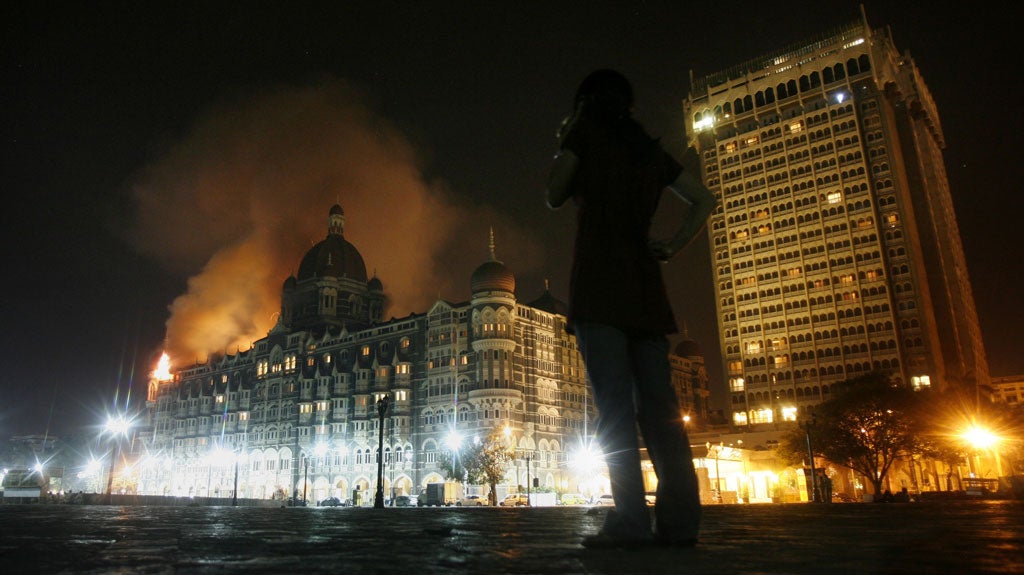Apocalyptic Realm: Jihadists in South Asia, By Dilip Hiro
A study which sets out to trace the orgins of jihadi violence in the Indian subcontinent is ambitious, but flawed.

The cover of Dilip Hiro's account of militant Islam in South Asia shows a soldier standing on a road, wearing gladiatorial protective gear, an automatic weapon in his hand. Looking at him, it is difficult to tell whom he is defending. Nothing in his uniform gives any indication of the army or security force he represents. Is he a UN Peacekeeper? An Indian? A Pakistani?
It is only when you look at the fine print that you realise that he is an Indian paramilitary soldier, guarding the long-forgotten "UN Military Observers' Group in India and Pakistan" in Srinagar, capital of Jammu and Kashmir, as Indians call the state.
That ambiguity about who is defending whom, who is the perpetrator and who the victim, has an undercurrent of the violence affecting many parts of South Asia. One of the promises, and premises, of this book is that it is meant to clear the ambiguities surrounding many conflicts in the region, laying bare the origins and consequences of jihadist violence in South Asia. Instead, by relentlessly piling data, historical nuggets, information and observations, the book ends up confusing readers, at least those who persevere through the fact-dense work.
Hiro's central premise – of bringing India into the equation of the wars in South Asia – is valid and important. Steve Coll's book Ghost Wars focused on American involvement in the region and Ahmed Rashid's Descent into Chaos on strategic misunderstandings and the cynical ploys of treating people as pieces on a chess-board, while Jason Burke's The 9/11 Wars looked at the conflict from the bottom up, as it affected the lives of the people.
None of those blockbuster narratives (with the possible exception of Burke's) adequately dealt with the impact of terrorism on India. Between 2002 and 2010, the largest number of terrorist incidents occurred in Iraq (6,307), but the second largest, at 2,749, was in India. Pakistan (2,553) and Afghanistan (2,443) come third and fourth, according to the Global Terrorism Database. Yet the terrorism India has faced is seen somehow in isolation, as if it were an outlier, not fitting the overall pattern.
Two reasons account for that: one is the assumption that much of India's terrorism is home-grown, about domestic issues, and unrelated to the wider conflict in the region. Indians disagree. Hindu nationalists particularly take pride in the emerging "axis" – imaginary – linking the US, Israel and India. They bristle when Western leaders, recalling the Al-Qaeda threat and naming the cities affected, begin with New York, go on to London, Madrid, Istanbul, then take a wide leap to Bali, somehow missing Mumbai. The second reason is Kashmir. Many analysts see it as a self-contained problem, separate from the activities of Al-Qaeda and others, particularly given the way the armed group Lashkar-e-Taiba has remained focused on attacking India. Hiro is right in bringing India into this equation.
The book, though, attempts too much. Instead of finding that central thread and building a narrative around it, Hiro ends up with several interesting possible books packed into one: a journey through the history of the Afghan crisis; the origins of Sufi Islam and its relationship with other strands of Islam in South Asia; the role of the US and the Soviet Union in the region; the rise of the Taliban; Pakistan's obsession with Kashmir; India's emerging relationship with Israel; the position of Muslims in India. He takes too long to reach the conclusion: of what jihadi violence has done to India, its links with regional violence, and its devastating impact on Pakistan. We know that the soldier on the cover guards something important. But why? There aren't any simple answers, and this book doesn't make the job of figuring it out any easier.
Join our commenting forum
Join thought-provoking conversations, follow other Independent readers and see their replies
Comments